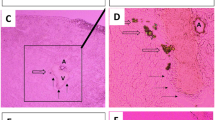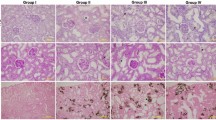Abstract
An experimental model that enables the close simulation of conditions prevailing in the kidney during the formation of stones, using living tissue of pig urinary bladder, was developed. The results obtained clearly confirmed the importance of the antiadherent glycosaminoglycan (GAG) layer in preventing the development of solid concretions on the urothelium. Of importance was the capacity of the necrosed urothelium to act as a heterogeneous nucleant of calcium oxalate monohydrate (COM) and dihydrate (COD) crystals, demonstrating the major urolithiasic risk factor that alterations of the healthy epithelium covering the renal papilla may pose in humans. The significant increase in brushite and hydroxyapatite crystals detected on the urothelium when the pH of the artificial urine was 6.5, and the protective GAG layer was reduced or the tissue was necrosed, was also notable. The crystallization inhibitory effects caused by citrate and phytate were also studied. It was found that whereas citrate, at normal urinary concentrations, caused a slight reduction in crystallization, with phytate there was total elimination of crystallization-when it was present at very low concentrations such as 1.0 μg/ml.
Similar content being viewed by others
References
Brenner BM, Rector FC (1976) The kidney. WB Saunders, Philadelphia. II:1640
Cifuentes L, Miñón J, Medina JA (1987) New studies on papillary calculi. J Urol 137:1024
Gill WB, Ruggiero K, Straus FH (1979) Crystallization studies in a urothelial-lined living test tube (the catheterized female rat bladder). I. Calcium oxalate crystal adhesion to the chemically injured rat bladder. Inv Urol 17:257
Grases F, Costa-Bauzá A, Conte A (1993) Studies on structure of calcium oxalate monohydrate renal papillary calculi. Mechanism of formation. Scanning Microsc 7:1067
Grases F, Costa-Bauzá A, March JG, Söhnel O (1993) Artificial simulation of renal stone formation. Influence of some urinary components. Nephron 65:77
Grases F, Costa-Bauzá A, March JG (1994) Artificial simulation of the early stages of renal stone formation. Br J Urol 74:298
Grases F, Garcia-Ferragut L, Costa-Bauzá A, March JG (1996) Study of the effects of different substances on the early stages of papillary stone formation. Nephron (in press)
Grenabo L, Hedelin H, Hugosson J, Pettersson S (1988) Adherence of urease-induced crystals to rat bladder epithelium following acute infection with different uropathogenic microorganisms. J Urol 140:428
Lieske JC, Toback FG (1993) Regulation of renal epithelial cell endocytosis of calcium oxalate monohydrate crystals. Am J Physiol 264:F800
Mandel N, Riese R (1991) Crystal-cell interactions: crystal binding to rat renal papillary tip collecting duct cells in culture. Am J Kidney Dis XVII:402
Menniti FS, Oliver KG, Putney JW Jr, Shear SB (1993) Inositol phosphates and cell signaling: new views of InsP5 and InsP6. Trends Biochem Sci 18:53
See WA, Williams RD (1992) Urothelial injury and clotting cascade activation: common denominators in particulate adherence to urothelial surfaces. J Urol 147:541
Author information
Authors and Affiliations
Rights and permissions
About this article
Cite this article
Grases, F., García-Ferragut, L. & Costa-Bauzá, A. Study of the early stages of renal stone formation: experimental model using urothelium of pig urinary bladder. Urol. Res. 24, 305–311 (1996). https://doi.org/10.1007/BF00304781
Received:
Accepted:
Issue Date:
DOI: https://doi.org/10.1007/BF00304781




